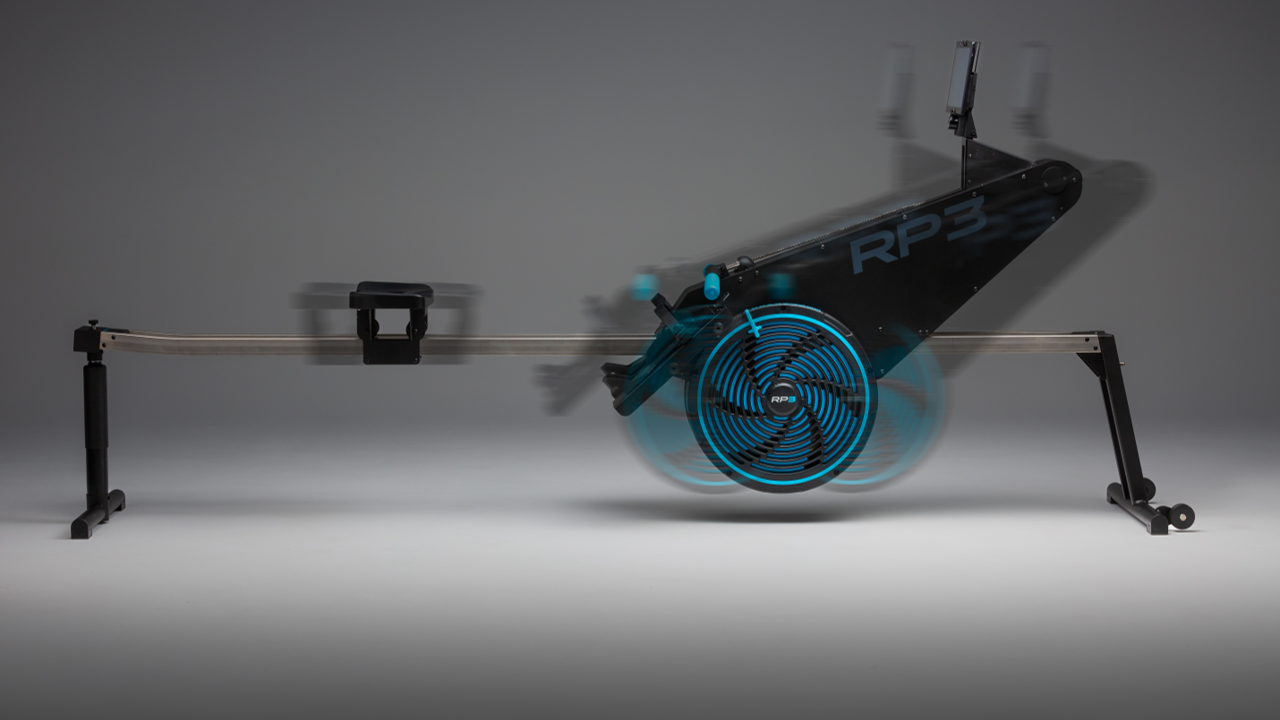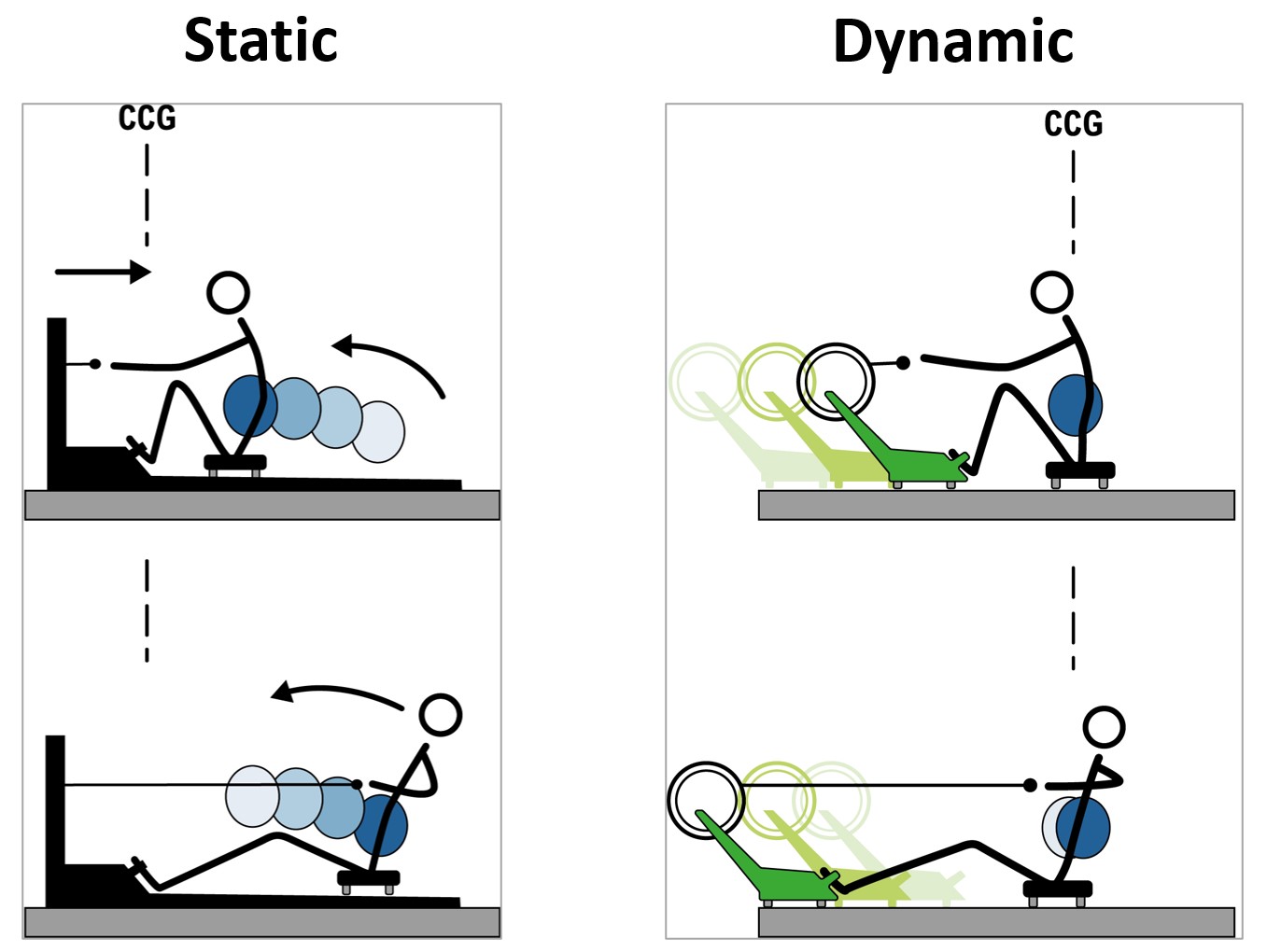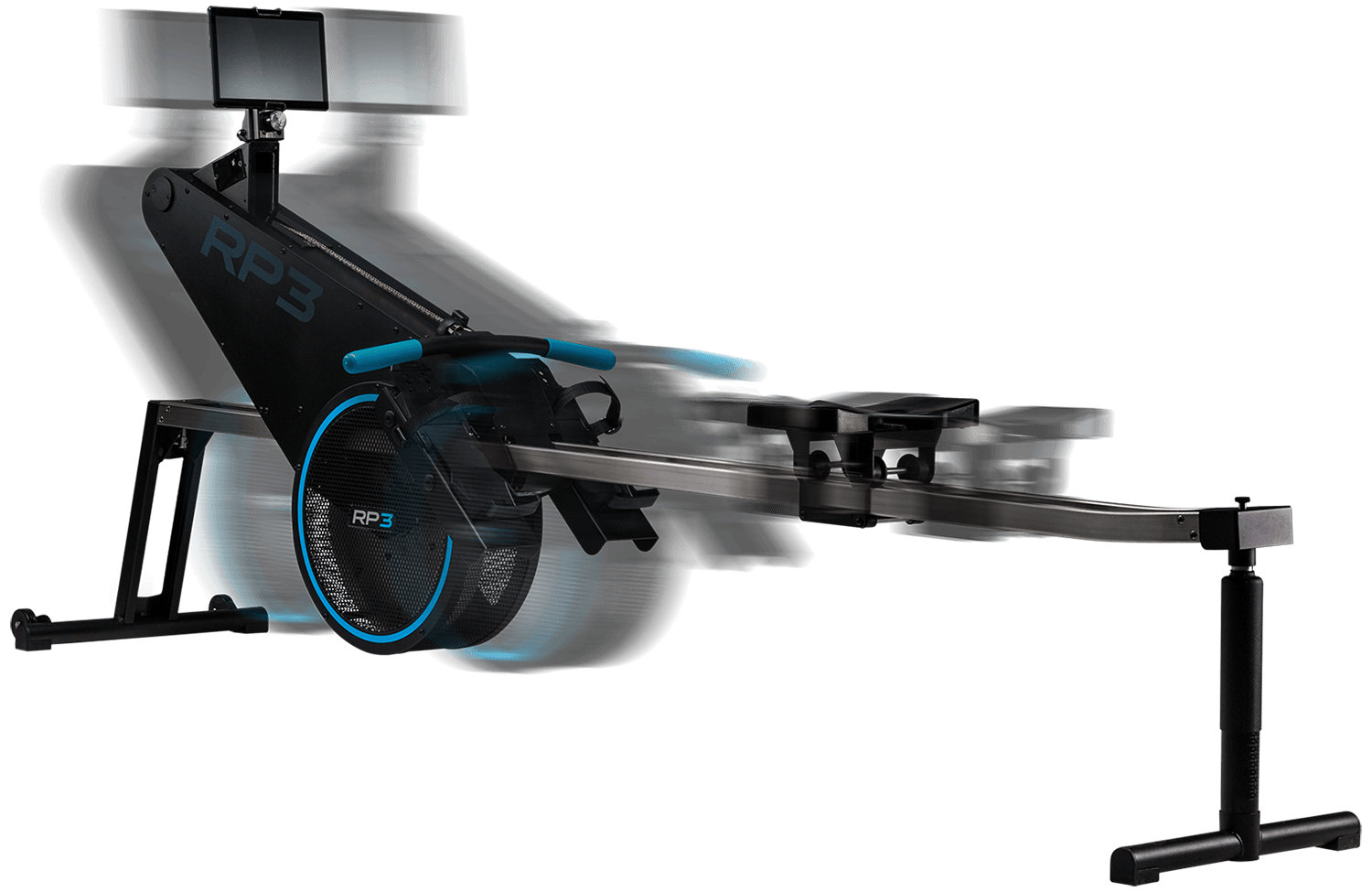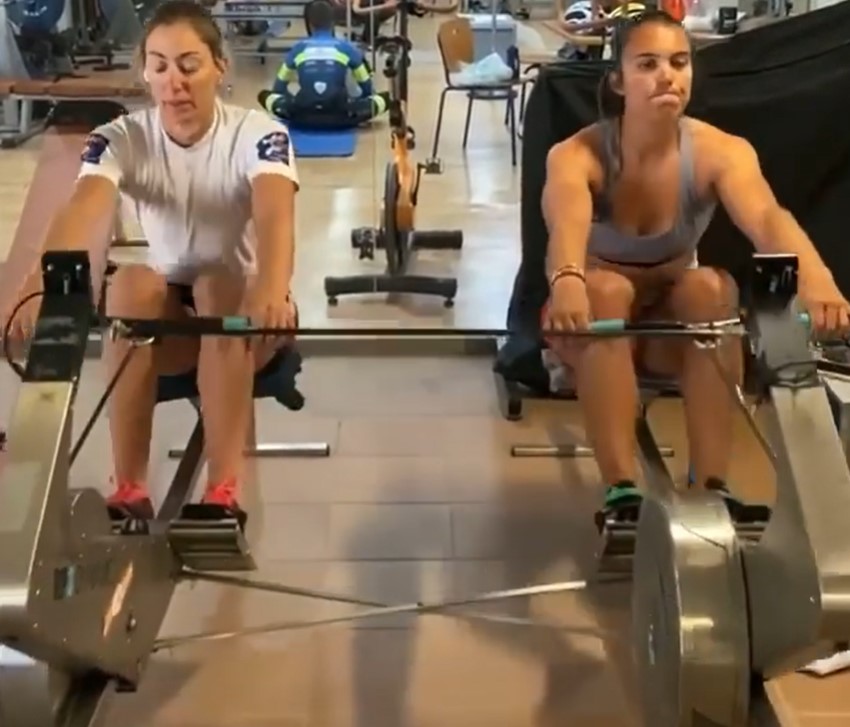Science of Dynamic Rowing
The biggest difference between a Static and a Dynamic Indoor rowing machine are the parts: seat and flywheel mechanism both are moving. On a Dynamic Indoor Rowing machine the flywheel and the rower are free to move along the horizontal axis.
The flywheel assembly on a RP3 weighs about as much as a single and is designed to mimic the iteratia, the physical movement of rowing like in the boat on the water. This means that the rower will move relatively little when compared to the flywheel, which is exactly how it feels in the boat and why we are using “True Rowing Experience” as our motto.
Watch a rowing regatta video and see how the boats are moving next to eachother while going forward at the same speed. Right after the start, when the boats are mostly still aligned, you can see them moving during every stroke.
You can see the acceleration within the stroke followed by a short phase of deceleration. This is caused by the movement of the bodymass of the crew, moving in a relative lightweight boat. RP3 simulates this physical phenomenon.
On a static rowing machine the flywheel can not move, meaning that it behaves as it would have infinite weight. This would be akin to fitting your oars to a very large and heavy boat. The most noticeable difference that this produces is in the “recovery” phase of the stroke. When you have finished a stroke, start the recovery movement; move forward in order to make your next stroke, on a static machine you have to move forward instead of letting the flywheel move towards you (like on dynamic).
Then, in order to take the next stroke, you first have to “land” on the footplate before you can start to pull on the handle again. This is a rather heavy concentric exercise that will limit your rate and alter the muscles used when compared to rowing on water.
Easier Transition
Most rowers need a couple of sessions to adjust to rowing on a static rowing machine after they have been out rowing on the water. With the RP3 rowing machines we know from a lot of athletes that they need almost no adjustment in order to perform at their best on the RP3 when coming out of the boat, and vice versa. This means that you can save valuable sessions and that it is very easy to switch out a session on water for an indoor session when for instance the weather is bad.
Due to the relatively small weight of the flywheel on a RP3, the rowing experience is much smoother and lighter which reduces stress on the lower back. This results in less chance of an injury and could even help athletes when recovering from lower back injuries.
Connection System
RP3 Rowing provides a connection system to connect two flywheels and even simulates the rowing movement and feeling even more, like you are in a double or pair. By connecting the dynamic flywheels, versus the sliders / rails, it simulates the accelaration and recovery phase for improvement of the synchronization in the boat.
Learn from Carlos about the difference and see how it works when the two different indoor rowers are rowing next to eachother: Cambridge Women





